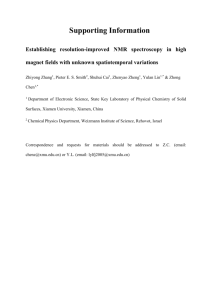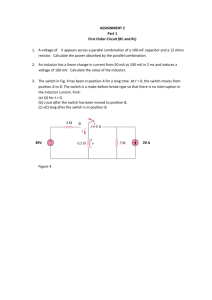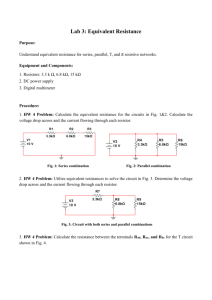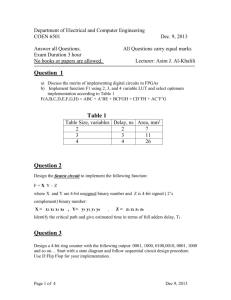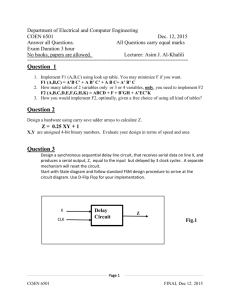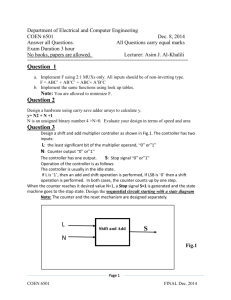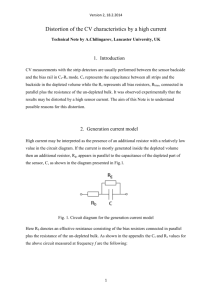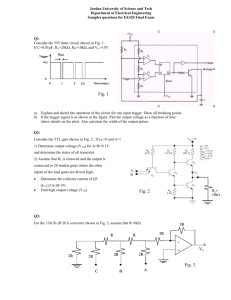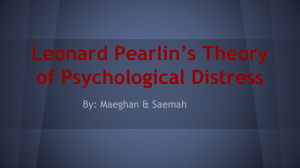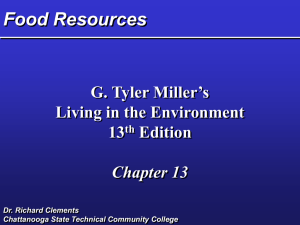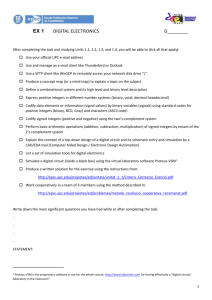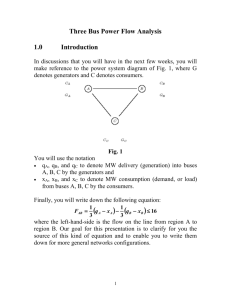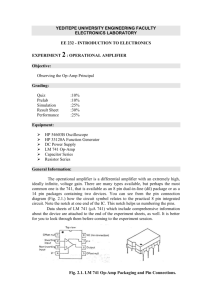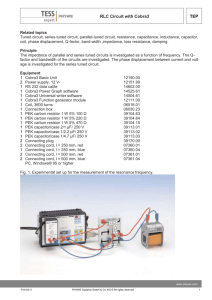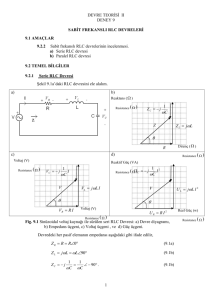EE213 Fall 2000 Exam 2 Tues Oct 24, 5.35
advertisement
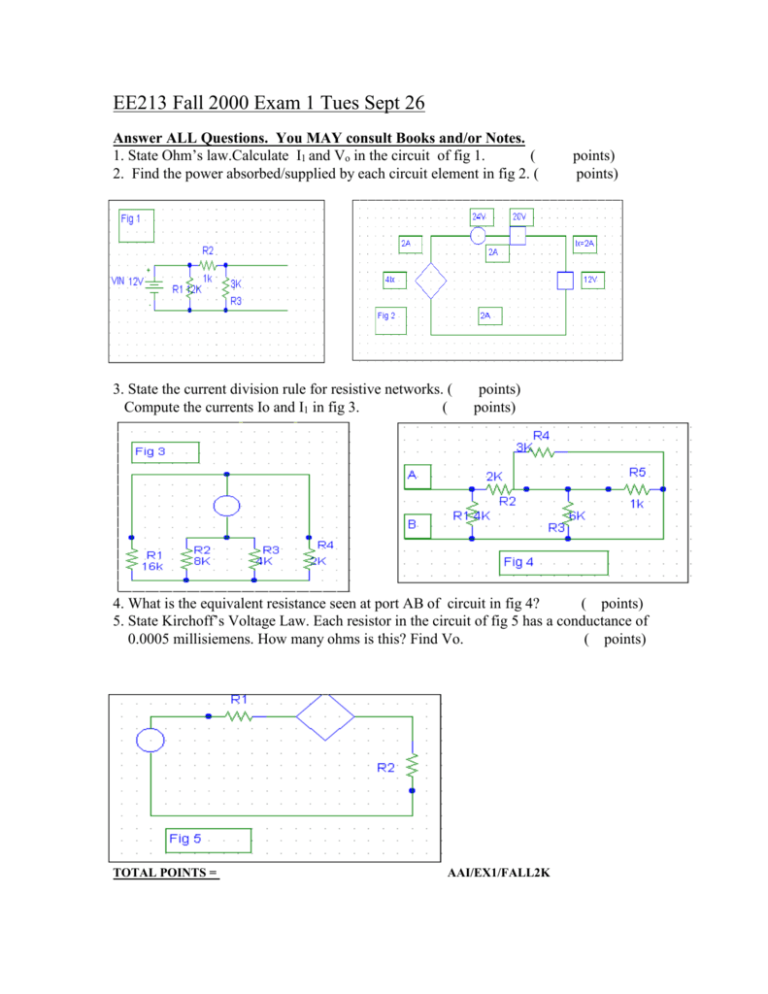
EE213 Fall 2000 Exam 1 Tues Sept 26 Answer ALL Questions. You MAY consult Books and/or Notes. 1. State Ohm’s law.Calculate I1 and Vo in the circuit of fig 1. ( 2. Find the power absorbed/supplied by each circuit element in fig 2. ( 3. State the current division rule for resistive networks. ( Compute the currents Io and I1 in fig 3. ( points) points) points) points) 4. What is the equivalent resistance seen at port AB of circuit in fig 4? ( points) 5. State Kirchoff’s Voltage Law. Each resistor in the circuit of fig 5 has a conductance of 0.0005 millisiemens. How many ohms is this? Find Vo. ( points) TOTAL POINTS = AAI/EX1/FALL2K EE213 Fall 2000 Exam 2 Tues Oct 24, 5.35-6.50pm Answer ALL Questions. You MAY consult Books and/or Notes. 1. State Kirchoff’s Current Law. Formulate nodal equations for the circuit of fig 1. Express equations in standard matrix form Solve for all node voltages and compute all branch currents Fig 1 (1 point) (2 points) (1 point) (4 points) 2. Define linearity with reference to electrical circuits. Use linearity to determine the current Io in the circuit of fig 2 3. Use the superposition theorem to calculate Vo in fig 1. 4. State Thevenin’s Theorem. Obtain the Thevenin equivalent circuit for fig 1 at port AB. Hence compute the current Ix in R1 (1 point) (4 points) (4 points) (2 points) (4 points) (1 point) Fig 2 TOTAL POINTS =25 AAI/HREX2F2K EE213 Fall 2000 Exam 3 Tues Nov 21 Answer ALL Questions. You MAY consult Books and/or Notes. 1. State Norton’s Theorem. In the circuit of fig 1, find current Io in R1 using Norton’s Theorem. (2 points) (6 points) 2. What value of RL in fig 2 maximizes the transfer of power from rest of circuit to RL? ( 4 points) Calculate the maximum power transferred to RL. ( 4 points) 3. In the circuits in fig 3a and 3b compute net capacitance and inductance respectively. (2 points each) AAI/EX3F2K/11172000 Total Points = 20 EE213 Fall 2K Final Hour Exam 12/14/00 Answer ALL questions, Open Book, Open Notes 1.Show that the circuit in fig 1 is a second order system for which the inductor current is described by the following second order differential equation: ( d2 iL /dt2 ) + (1/RC) d iL /dt + (iL /LC ) = 2 amp (3 points) Obtain the natural response for inductor current iL (t) (2 points) Hence state the type of damping observed in the circuit. (1 point) Derive the forced or steady state response part of iL (t) (1 point) Given that Vx(0) = -10V and iL(0) = 0 determine complete solution for iL (t) (3 points) 2.Find the pulse response Vo(t) of the circuit of fig 2 assuming VIN is a 12volt 3sec pulse applied at time t=0. ( Hint: find pulse response as a combination of step responses) (10 points) Total Points = 20 EE213 Fall 2001 Spice Solutions to Class Examples
